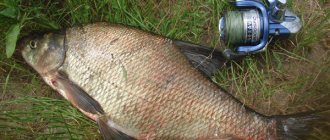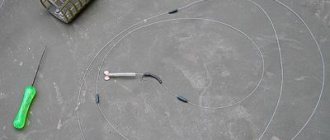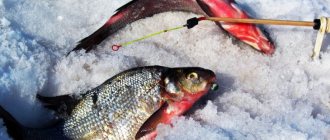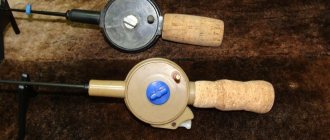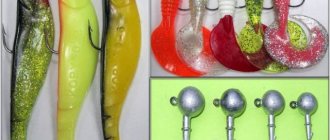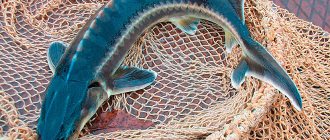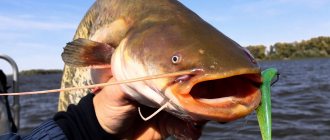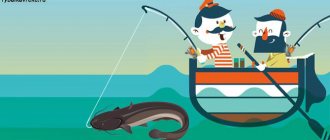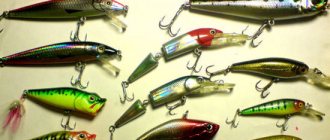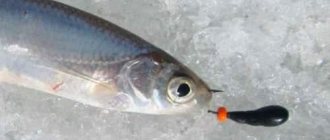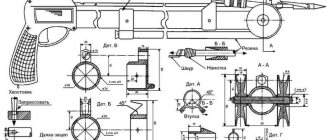Donka for catfish is the most ancient way of catching this fish. Catfish are caught by casting from the shore and boats with various bottom gear. Among all the inhabitants of the ichthyofauna of our reservoirs, catfish enjoys special respect among fishermen. In adulthood, this fish reaches a weight of several tens of kilograms, and catching such a trophy is an honor for every fishing enthusiast.
Since catfish are a bottom-dwelling fish, catching catfish with a donk is the most effective. Donka is a catchy tackle that is used to catch the king of reservoirs both from a boat and from the shore. The design of the gear depends on the fishing conditions and the season in which the fishing takes place. We’ll look at how to catch a catfish on a donk and tie a rig with your own hands in this article.
Where and at what time of year do you catch catfish?
Like any other fish, catfish have periods of activity when it moves around a body of water in search of food, but even at this time, pits and undercuts in which potential food accumulates become their favorite stops.
During periods after puberty, the catfish does not like sunlight and prefers deep areas with silty and sandy soil. In small rivers with weak currents, this fish hides in the grass, even if the thickets are not far from the shore. The catfish searches for and even digs underwater caves, rests in the pipes of hydraulic structures and leads a sedentary lifestyle.
The period at the end of summer and beginning of autumn is considered the most productive for fishing by somyatniks and they go to the rivers for their cherished dream in the form of a many-kilogram trophy. This is the time when the rains begin and the water in reservoirs becomes cloudy, and other representatives of the aquatic world become active before the first cold weather.
If the angler manages to determine the site of the catfish, then 3–5 trophy specimens can be caught from one hole.
When studying a reservoir in search of a promising place for catching catfish, pay attention to the points where:
- there are hydraulic structures, bridges and water pumping stations, with great depth and fast bottom current;
- at the bends of the river, where there are eddies of water, whirlpools and areas overgrown with grass;
- areas on the river with reverse flow, even if they are 5–10 meters from the shore;
- deep places in the main channel, or old channel of the river;
- there are perennial thickets of reeds, near which there are great depths;
- there are fishing platforms or old boat piers and there are pits.
Finding the right place for fishing is 70% of success in catfish fishing and this point needs to be given special attention.
Old-timers who have been fishing in the same sections of the river for many years know where the holes are and where it is necessary to look for catfish first. Just don’t forget that new promising places appear every season and it’s important to be careful to discover them.
If you have a boat and an echo sounder, the search task is simplified and even those fishermen who fish from the shore will definitely use the opportunity to use search technology. In its absence, a weight on a rope is used, with the help of which the river bottom is “tapped” for the presence of holes and undercuts.
Such a search takes more time and will require greater physical effort, but the reward in the form of trophy fish compensates for all losses.
On artificial reservoirs, the deepest places are near the dam, and that’s where you need to look for catfish holes and trophy fish. In May, the catfish finally “wakes up” after the winter cold and periodically goes out into shallow water in search of food. In places less than two meters deep, it is useless to find it, and this also applies to young animals. In July and August, catfish fishing from the shore is especially productive, although it can also be caught from a boat quite successfully.
The inconvenience of fishing from a boat is that you often have to wait a long time for a bite and you need to remain quiet so as not to spook the fish. Not everyone will like sitting in a boat for a long time and motionless, so it’s easier to catch a trophy on a coastal bottom. Having discovered catfish parking areas, you should place shore gear in a place where there is a convenient entry into the water, because landing a large catfish will require not only dexterity and skill, but also space.
Usually fishing is carried out with several donks in order to brighten up the wait for a bite and increase the chances of a good catch. In summer, catfish bite better at night, when they go hunting in search of prey. If you can find paths along which fish pass, then there is a high probability that they will appear there on subsequent nights, so it is important to remember the place of passage.
Both large and small catfish do not like the heat, from which they hide in every possible way, but during summer rain or windy weather the likelihood of being caught increases significantly. With sudden changes in temperature, cold weather or a drop in pressure, the catfish bite practically stops and if you manage to catch fish at such a time, then this is rather an exception to the rule.
Features of seasonal fishing in spring, summer, and autumn
Spring
Donka is an important tackle when fishing in the spring. Especially in May, you can get a positive effect from catching catfish with a quok.
The coolest places for catching catfish are the exits from the pits where the fish spent the winter. In the spring, in the afternoon, after the water has already warmed up, the best time for catching catfish begins, which begins to intensively cruise through a warm body of water.
Summer
Summer fishing for the “master of the pools” is a very exciting activity, since it is at this time of year that the best bite occurs.
Fishermen do not notice either time or fatigue. There are a number of effective ways to catch catfish in the summer. At this time of year, it lives both in the depths and visits the shallows on the rifts. The choice of place to catch catfish in summer is varied. But the main location remains proven quiet pools. You can see them in the evening, when the heat subsides, how they cut through the surface of the water, creating noisy splashes.
Catfish bite well, both in the morning and in the evening. But it is best caught at night in the summer. A tasty bait for catfish at this time is a piece of fish or a frog. But in each river it bites differently, even in a special way.
Fishing with several bottom fishing rods is the most successful option. You can put different baits on all the hooks. It is better to cast for a frog closer to the shore. You can cast it further away with live bait and crawlers.
Autumn
Catching catfish in the fall is a simple, but at the same time very exciting activity. Catching catfish is not particularly difficult, since when the temperature drops and in cloudy weather, it begins to feed at an accelerated rate, without leaving its permanent places of deployment.
However, in the fall it is more difficult to guess the habitat of the catfish than in the summer or spring. Determining such a place is possible by observing the habitat of fish such as carp, bream, and chub. Where there is a clear concentration of these fish, catfish may also be present. It turned out that catfish actively bite in the fall during the day than at night. The fishing location also affects the bite - it will be better to bite in holes than in shallow water. A particularly good time for fishing is early morning. Maintaining silence is a sure guarantee of successful fishing, since catfish are a particularly sensitive fish to extraneous, unfamiliar noises.
What is the key to success in catfishing? The first is to fish in the right place, the second is to fish at the right time of day, taking into account the greatest activity of the fish and the tendency to feed, the third is to catch catfish with the right tackle and with the right bait. All these three correctness will ultimately lead to a simple algorithm - catch catfish in pits, mainly at night and preferably with bottom gear.
Varieties of catfish donks
Despite the fact that the catfish are very large, not every angler can catch a catfish weighing more than 15–20 kilograms on a donk. You need to be prepared for any surprises, and therefore the main requirement for catfish donks is the reliability and durability of the gear.
Such gear is:
- with a fishing rod (spinning rod);
- without a rod, with fastening on the shore to a strong pole;
- multi-hook type - elastic bands.
Catfish are also caught using a net, but only if the size of the reservoir allows it. This fish can also be caught on a feeder with a method rig , but if there is a trophy fish on the hook, it will not be easy to get it into the landing net.
Two types of bottom gear for catching catfish
The gear for catching catfish on a donk can be made in two versions. The first type of gear includes the construction of donks using the classical method, when the cord is equipped with leashes and a weight and tied on the shore to a pole rigidly installed in the ground. Varieties of the classic method of bottom fishing are the elastic donka and the multi-hook net.
The second option is the installation of bottom equipment using a rod and reel cord as a basis, which in its modern form looks like installing equipment on a spinning rod or feeder gear. The use of both types of gear does not differ much in terms of fishing conditions; the main distinguishing feature is the multi-hook nature of the classic gear and only a single hook of the catch. It is also worth noting the greater coverage of the fishing area by the classics of the bottom genre and the precise installation of the bait supply on the hook. But installing the equipment on the rod allows you to use a feeder with bait and fish in a bottom hole, which is impossible to do with a classic donka. We will consider the design features of equipment types in more detail in the further description of the topic.
Donka with a rod
Bottom tackle for catching catfish using a rod consists of a powerful, heavy fiberglass plug base, which includes a massive inertia-free reel. To install gear on the shore of a reservoir, all kinds of stands are used. They are used starting from an ordinary wooden flyer stuck deep into the ground and ending with a rod-pod for a couple of similar rods. The installation itself is simple and consists of a hundred-meter piece of braided cord, a blind sinker, a powerful hook and a float to hold and control the installation of bait on catfish above the bottom of the reservoir. After casting the equipment, the cord is equipped with a bite alarm, which can be either a bell or an electronic buzzer.
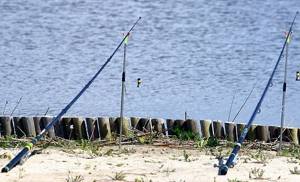
Important! To ensure the safety of the rod from being pulled into the water by a fish that has taken the bait, it is recommended to equip the butt of the tackle with a safety carabiner, which is hooked with a cable or rope to fixed elements installed on the shore of the reservoir, which can be trees, cars and dam structures.
Zakidushka without a rod
In the classic version, donkey equipment for catfish is stored on a wooden reel, which during fishing is used as an element for attaching gear on the shore. About hundreds of meters of the main braided cord are wound onto the reel, which is supplied with leashes made of monofilament fishing line, equipping them with small floats for lifting the bait from the bottom and directly with the hook itself. The distance between the leads is at least five meters, which allows you to fish the bottom most effectively. The cord can be attached to the load either directly or through an elastic band, popularly called a model, which allows, when stretched, to serve leashes with hooks without removing the load from the water. Having secured the reel with a cord rigidly fixed to it to a support on the shore, a shock-absorbing loop is arranged. To do this, use a meter-long piece of rope, tied between a one and a half meter bend of the main fishing line. After casting, the line of the tackle is pulled all the way and equipped with an alarm.
Important! It is advisable to use combined alarms, sound and light, since catfish fishing mostly occurs in the dark, and installing a firefly allows you to more accurately and accurately determine the triggered gear.
Donka with a spinning rod
Donka with a spinning rod is the optimal equipment option, providing:
- reliability of gear;
- convenience when re-casting;
- comfortable fishing.
It is better to cast tackle over a long distance with the help of a rod, as well as to fish out a trophy caught on a hook.
In addition, by working with a fishing rod, the fisherman manages to dampen the jerks of the fish and gradually bring it to the shore, where the landing net awaits. Donks can also be delivered from a boat, but in this case you need to be prepared for serious physical activity and there is no talk of outdoor recreation.
Choosing a spinning rod for catfish donkey
Spinning rods for catfish must withstand high traction loads and the best choice is marine blanks adapted to catching strong fish. For many years, fishermen have been catching catfish on metal spinning rods, but with a significant margin of safety, they are also heavy and it is quite difficult to land fish from a long distance.
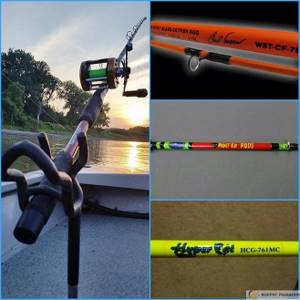
Carp blanks with a dough of 3.5-4 Lb are also suitable, capable of lifting fish weighing 10 kg or more. After a bite, the catfish “presses” and tends downwards, so to lift it and bring it into the landing net you need a carbon rod with a hard tip. Feeder blanks are not suitable for catching catfish, even if they have a large test and fast action.
When going fishing, fishermen try to get as much information as possible about the reservoir and its inhabitants. If there is a trophy catfish in a river or lake, the rod needs to have a margin of strength and reliability. Catfish rods adapted for catching this strong fish are also sold, but only catfish rods buy them, since they are not suitable for other types of fishing.
Unlike carp fishing, when catching catfish, power casts over long distances are not used, so the requirements for the casting characteristics of the forms are lower than for carp rods. On the other hand, when landing a catfish, first of all, it needs to be lifted from the bottom of the reservoir and the traction power of the form is more important than the sending power. A rod length of 2.70-3.00 is enough to catch trophy fish.
How to catch catfish on a donk?
The fishing location is studied in advance. It is necessary to inspect the shore, find out where the holes are in the reservoir and what other fishermen feed the predators with. On the day of fishing, donks are installed. It is recommended to do this according to the following scheme:
- one bottom - at the gentle exit from the depression;
- two - in the lower parts of the pit;
- one is on the pit itself.
If fishing is done in the summer, then in the evening a fire is lit and bottom gear is installed. It is necessary to check that they are well fixed. After this, the reels’ brake mechanisms are adjusted and light or sound bite alarms are installed.
As soon as the bite occurs , the prey should be fished out, applying remarkable restraint. You should not wrap the fishing line around your hand, otherwise the fisherman may be thrown into the water with a jerk.
Features of fishing from a boat
Fishing from a boat has its advantages and disadvantages. The advantage is that the fisherman is located near the fishing spot, as a result of which the bait is delivered exactly to the desired point. For such hunting, you can use a thinner and not very long fishing line.
The downside of fishing from a boat is the difficulty of landing trophy fish. The giant can pull hard, causing the fisherman to end up overboard. Catching catfish alone on a rubber boat is risky.
Fishing with a worm
it is better to catch it for the first time . To do this, use a large hook with a long shank, onto which a bunch of worms or crawlers is strung. You won’t be able to catch trophy fish with them, but you will be able to practice catching a predator.
To attract fish, you can mount a feeder and attach two hooks to the bottom. A mixture of chopped worms and soil should be placed in the feeder as bait. In addition to catfish, perch, bream, and ide can bite on worms.
Coil
The first catfish donks with spinning rods were equipped with inertial reels, because there was no alternative to them. Modern donkeys are equipped with inertia-free or marine-type multiplier reels with reliable mechanisms and a large margin of safety.
A multiplier is better, since the design of the reel prevents the cord from tangling during fishing, but the cost of such a reel is higher than that of a spinning reel.

When choosing a reel, pay attention to its:
- reliability;
- functionality and protection from warp overlaps;
- moisture protection;
- spool size;
- number of bearings;
- spool line capacity;
- price.
The size of the spool is especially important, because when catching a large catfish, the fisherman has to make great efforts to pull the fish to the shore. Therefore, the larger the size of the spool, the more fishing line is wound in one revolution of the reel and the faster the fish is pulled to the shore.
On the other hand, when fishing, you have to release the line in order to tire the fish and prevent the equipment from breaking. A properly configured friction brake of the reel helps with this and makes it easier for the angler to get the trophy into the landing net. Even when fishing at close range, 100–150 meters of cord are wound onto the reel spool so that there is a supply of main fishing line for safely landing trophy catfish.
If the fishing distance is large, then the amount of cord on the spool should be greater, in the appropriate proportion.
Important! To comfortably fish for a trophy catfish, you need to have at least 50-100 meters of cord on the reel spool.
The weight of the reel for catfishing does not play a decisive role, because during fishing the rod lies on the stands and the fisherman picks it up only to make a hook and bring the fish into the landing net. The same applies to the number of bearings and there is no need to buy a reel with more than 6 bearings, it is more reliable and will last longer.
Somyat fishermen prefer to buy reels for sea fishing that have all the best qualities for catching trophy fish, including catfish. Such reels are resistant to aggressive environments, salt water, and with regular maintenance they will last a long time.
Line on Soma | Which Line to Choose?
You need to choose a fishing line that is strong, but not too thick, so that it fits the thin rod. The ideal option is braiding, the strength of which is 10-12 kg.
When fishing with a thin rod, it is better not to use monofilament, as it is thicker and can withstand the same 12 kg. Plus, monofilament requires increasing the weight of the head, and this excess is no longer acceptable.
3 ways to improve your fish bite!
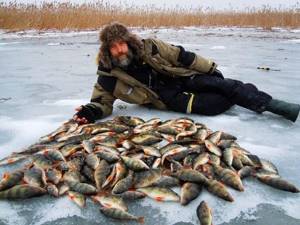
Over 15 years of active fishing, I have found many ways to improve the bite, and here are the most effective:
1. Bite activator . This pheromone additive attracts fish most strongly in cold and warm water. The Fish Hungry bite activator has proven itself to be excellent - Read more…
2. Tackle with increased sensitivity . You should first familiarize yourself with the features of using a particular type.
3. Pheromone baits . They attract the attention of fish, stimulate hunger and cause a schooling reflex, which allows you to collect a lot of fish in one place.
You can get the rest of the secrets of successful fishing for free by reading my other materials on the site.
3 ways to improve your fish bite!
Over 15 years of active fishing, I have found many ways to improve the bite, and here are the most effective:
1. Bite activator . This pheromone additive attracts fish most strongly in cold and warm water. The Fish Hungry bite activator has proven itself to be excellent - Read more…
2. Tackle with increased sensitivity . You should first familiarize yourself with the features of using a particular type.
3. Pheromone baits . They attract the attention of fish, stimulate hunger and cause a schooling reflex, which allows you to collect a lot of fish in one place.
You can get the rest of the secrets of successful fishing for free by reading my other materials on the site.
All this is true for those fishermen who go for catfish in order to experience the pleasure of the fishing process.
However, if the main goal of fishing is the size of the catch, then you need to select gear for a heavier category.
The rod should have a test weight of up to 1.5 - 2 ounces. You can use 30 lb line with it and choose a reel that suits it.
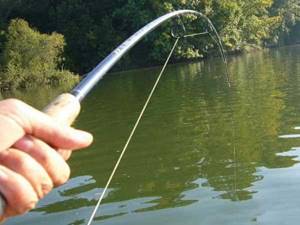
If extreme care is taken, 50 lb. cord can be used. If you choose a stronger fishing line, you will be able to catch catfish weighing more than 100 kg, but this is unlikely to be relevant for amateur fishing.
The reel can be selected to suit your taste. It is convenient to use both Multiplier and Inertialess here.
Of course, the half-sea “meat grinder” is practically in no way inferior to a classic baitcasting reel, however, the best reviews in the hunt for this predator were received by a strong and reliable baitcasting fishing rod with a Penn-965 reel.
Fishing line for catfish
Despite the fact that not every catfish caught weighs 10 kilograms or more, reliable and durable gear is selected for catching this fish, and this also applies to the main fishing line.
Here the fisherman has to solve a difficult problem, because thick fishing lines with a large margin of safety can scare off cunning fish that are distrustful of all unfamiliar objects. If you take an inconspicuous fishing line of a smaller diameter, it will not withstand the jerks of a trophy fish and the tackle will break at the most inopportune moment.
As you know, the following are used as the basis for fishing tackle:
- monofilament lines;
- fluorocarbon fishing lines;
- braided cords (fishing lines).
The best solution for choosing a base for catfish tackle is a dark-colored braided fishing line. Braid has the highest strength among all types of fishing lines with a small diameter, so catfish tackle is knitted on braid. At the bottom, such a base looks natural, reminiscent of aquatic vegetation, and does not frighten wary fish.
It is clear that bright colors of braid are undesirable, because this unmasks the entire tackle. The stores sell four- and eight-strand braided fishing line, and the second option is preferable, although it is more expensive. The eight-strand braid has a round shape along its entire length and the weaving of the threads is denser, which means the breaking load is greater.
The braided reel indicates how many wires are in it, so when purchasing a base for a donkey, it is not difficult to make the right choice. The rigidity of the braid is also important, because soft material, when wet, becomes more tangled, knots and puffs appear.
So, as a basis for the catfish donka, we take a rigid braid with a diameter of 0.25 and above, and it will cope with all the tasks.
Important! After fishing, be sure to dry the braid, this will extend its service life and maintain the strength of the base.
Spinning tackle
Spinning fishing is considered a difficult activity that involves fighting large prey. To remove a river monster from the water, you need to use powerful, functional and reliable fishing rods with good shock-absorbing properties.
When collecting gear for trolling catfish, you should give preference to special models designed for this method of fishing.
Selection of wobblers
One of the most effective baits for catching catfish is a wobbler. Fish are well attracted to both floating and sinking models, and the key requirement is the depth of the product. This property is provided by the manufacturer, but the angler can change the immersion depth of the wobbler himself.
When catching catfish by trolling, you need to consider the following factors:
- Diameter of braided line.
- Distance between boat and bait.
- The speed of the boat.
The bait will be submerged to the maximum depth when using a thin line. Fans of trolling fishing prefer the following models of wobblers: Rapala Super Shad Rap, Mann's Stretch, Halco Sorcerer and Bomber Deep Down Long A.
The listed wobblers for catfish demonstrate good effectiveness due to the wide variety of colors, stable and attractive play, as well as good immersion depth. And according to experienced spinning anglers, a “bomber” wobbler for catfish is the best solution in its price category, allowing you to attract even lazy fish.
Spoons
Every angler's arsenal should include catchable lures for catfish. Particular attention is paid to thick-walled models with large dimensions and heavy weight.
The bait is slowly pulled along the bottom, causing the turbidity to rise, which creates an imitation of the movements of live prey.
Coil selection
If you are interested in how to catch catfish, you need to carefully select a reel. It uses a reinforced product with a spool capacity of up to 3000-5000. At the same time, the predator is caught with both powerful carp reels and models for sea fishing.
For catching catfish by trolling, both power multipliers and inertia-free structures are allowed.
Rod
An important element of equipment for catfish is the fishing rod. It should be as durable as possible, able to withstand strong and aggressive jerks. The optimal length is 2.7−3 m, and the test is 20−60 g. Preference is given to forms with a fast action.
Hooks
To catch catfish with live bait or artificial bait, you must use high-quality hooks. They must be made of durable materials, have sufficient size and degree of sharpening. You can use both store-bought and homemade hooks for catfish (The size of the hooks is determined by the size of the expected catch).
If you expect to catch 5-kilogram specimens, you can get by with carp hooks. Larger predators are caught with hooks numbered 5,9, 10 and larger, depending on their weight. You can't skimp on these products.
Installation
At the stage of installation of gear for catching catfish with spoons or live bait, the reel is equipped with a strong fishing cord or fishing line, 200 m long. A load is fixed at the end of the main line, and a leash and hooks are attached at a distance of 50 cm from the load.
Swivels or carabiners are used as fastening elements. Fishermen also advise installing a leash with a forged hook, instead of a single product.
Hooks for catfish
The choice of hook for catching fish depends on the expected size of the fish in the catch, as well as on the size of the baits used, and this also applies to hooks for catching catfish. But at the same time, the edge of the catfish lip is hard and the hook must be wide enough to cut through the soft tissue.

The catfish has great strength and, when forced to fish, shakes its head, trying to free itself from the hook. The sharpness of the hook's tip determines how deeply it will penetrate the fish's lip and how reliable the hook will be.
Main characteristics of catfish hooks:
- size;
- The diameter of the wire;
- the material from which the hook is made;
- forearm length;
- bend of the sting;
- underhook width;
- beard size;
- sharpness.
Catching catfish using bottom tackle is not at all easy, and the fishing result depends on the sharpness and strength of the hook.
As an example, here is a small table of hook sizes for catching catfish of different sizes:
| fish weighing up to 10 kg | 4–6 numbers according to the European classification |
| fish weighing 1–15 kg | hooks 2–4 numbers |
| catfish weighing more than 15 kg | hooks 1-1.0 numbers |
As for the manufacturers of catfish hooks, Qwner and Gamakatsu are perhaps now the leaders of the Russian market and their products are really sharp, reliable and durable. Ovner hooks are slightly more expensive than Gamakatsu, but their reliability has been tested by time and by many fishermen.
As you know, most fishing hooks are now produced at Chinese factories, and this also applies to products from popular European manufacturers. Therefore, in order to save money, it is worth looking for hooks on the Chinese Aliexpress exchange; they will do an excellent job with the assigned functions and will cost less than a branded model.
When using large baits for catfish, such as mole crickets or frogs, double hooks converted from tees are used. To make such a hook, you need to bite off one tip on the tee with side cutters or pliers. A ready-made double will not work, because its strength and reliability are lower than necessary for safely landing trophy fish.
When fishing for catfish, re-delivery of gear is done no more than once every three to four hours, and before delivery, you need to check the sharpness of the hook and, if necessary, replace it with a new one.
Important! After tying the hook to the leash, the knot must be glued so that it does not come undone when a trophy fish bites.
Choosing equipment for catfish hunting
Many years of observation of the behavior of the predator and its habitats have suggested that the best means for hunting it are the following.
Bottom gear
Depending on the region and habitat of this fish (in the Kuban there are some conditions, on the Kama and Oka - others), hunters for the king of the underwater world use their own modifications of equipment, but, as a rule, the operating principle is the same, the difference is only in the nuances. You can construct catfish donks with your own hands.
To learn more:
The subtleties of fishing with a diverting leash in the current in the fall
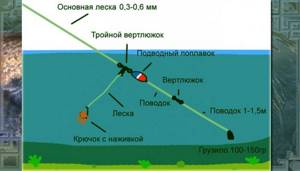
Sometimes they use gear with fishing rods. For installation, take strong and reliable sticks (aluminum spinning rods, models for catching carp and large sea creatures). Such a fishing rod should withstand powerful jerks of large fish. The selection of the coil is approached in the same way - it is no less durable.
The choice of fishing line depends on the size of the fish living in the fishing area. Sometimes it is preferable to wind monofilament with a diameter of 0.5-1 mm onto the spool. For a leash, take a vein 0.1 mm thinner than the main one. The load can be made stationary or sliding. At shallow depths and minor currents, its weight can be 100-15 g, and in order to hold the bait away from the shore in a deep hole, weights of up to 1 kg are used.
Catfish hooks are large and with increased strength, usually numbers from 10 to 40 from different companies. Some fishermen place live bait on several stings at once, piercing it in different places. The risk of loss of expected production is significantly reduced.
Tackle for catfish can be designed without the use of a fishing rod. Such equipment is used in places where fishing is done at short distances from the shore or from a boat. Donks of this type are called “zakidushki”. There is little sporting interest in their use, but the performance is good. In such gear, instead of the main fishing line, a nylon cord is used, to which leashes with a diameter of 0.5-0.8 mm are attached, but otherwise its design is no different from that described above.
When fishing from the shore, such equipment is tightly tied to stakes, bushes, trees, and while in a boat, it is held by hand (but in no case is it wrapped around the palm!). Donks, as a rule, are used at night, throwing them in the evening and checking them in the morning.
To learn more:
Fluorocarbon pike leashes: the secret to successful fishing
Spinning
Using such equipment, catfish are caught in those reservoirs where the holes are located close to the coastline. Having discovered a depression, the angler can successfully lure out the target of the hunt. But in order to pull it out, you need to properly design the tackle. Spinning for catfish must have a strong rod up to 3 m long. Power reels can be inertia-free or multiplier. The fishing line has the necessary strength margin.
When fishing for catfish with a spinning rod, jig baits and large spoons work well. But some fishermen prefer silicone products (twisters and vibrotails) of large sizes with heavy weight heads. The insertion of artificial nozzles should be done smoothly and slowly, avoiding sudden jerks and long stops.
Catching catfish by trolling using boats has also proven successful. By attaching to the stern or holding in your hands a powerful spinning rod with a baitcasting reel and placing a deep-sea wobbler on a braided cord, you can achieve the desired result.
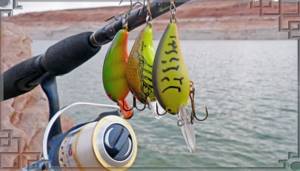
Transmissions
The tackle is not similar to a standard donka except for the number of hooks attached to it. Accordingly, its use in different regions may be limited by time of year or prohibited altogether. Before you go to a reservoir with such equipment, you must take into account all legal requirements so as not to find yourself in an unpleasant situation when meeting with representatives of the fisheries inspection.
The design of the saddle is quite simple: a weight is attached to the main core, 0.6-0.8 mm thick and 25 to 40 m long (a nylon cord is also suitable). At a distance of about a meter from the weights, tie a leash 40 to 50 cm long with a hook. The amount of undergrowth can be varied. Then one end of the tackle is tied to a tree or peg on the shore, and the second (with a sinker) is thrown into the water so that the vein is stretched.
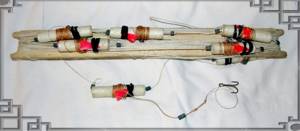
Kwok
Use of this device requires a boat. At half-water, an appetizing bait is lowered under it on a fishing line. Some fishermen hold the string in their hands, others use rods to which a reliable catfish reel is attached. From time to time, the hunter strikes the water with a kwok (a structure made of a handle, a cutwater and a hoof). The vibration arising from its use forces predatory giants to leave their secluded places and go hunting. With this method of fishing, it is important to practice the nodding technique.
To learn more:
Equipping a donkey for crucian carp: how to make a catchy tackle
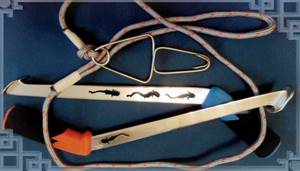
Zherlitsy
In terms of their design, the devices resemble donks, but they are equipped with a smaller number of veins. Traditionally, such gear is tied to coastal bushes and trees, using large baitfish or a frog as bait.
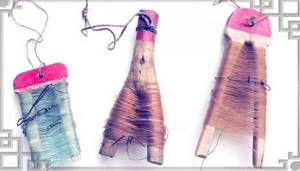
Sinkers
The bottom is equipped not only with a fishing line and a hook, but also with a sinker, which presses the equipment to the bottom and falls into the visibility zone of fish suitable for the bait. Therefore, you need to disguise the load so that it does not scare away the fish. Lead sinkers are painted with dry camouflage paint, but there is a more interesting and economical solution - pebbles from a pond.
If the equipment for catfish is brought in by boat, then the flight qualities of the cargo do not matter at all, but an ordinary stone, of which there are thousands at the bottom of the reservoir, certainly will not frighten off the distrustful fish and the chances of successful fishing will only increase. Of course, you will have to take a larger stone than the lead weight, but you won’t have to throw it by hand, and the size is not as important as camouflage.
Advanced fishermen use carp fishing rigs with a dropped weight, and the use of pebbles in such cases is even more justified. When dropping the load, it is easier to catch fish, because there is no extra weight, and the loss of a stone does not threaten additional material costs.
If catfish fishing is carried out from the shore by casting, then lead weights weighing 80 grams or more are used, it all depends on the strength of the current in the reservoir. Lead weights are also used in installing a catfish bait, because this tackle is thrown by hand and it is necessary for the load to fly well and far, delivering the equipment to the fishing point.
The following weights are mounted on catfish donks:
- deaf;
- inline (sliding).
The choice of a specific type of sinker depends on the design of the bottom and the fishing range, but sliding sinkers have advantages, since when biting the fish do not feel the weight of the load.
Features of catching catfish from the shore
If you want to catch a large catfish, then try to find a place on the shallows, not far from which there is a large hole where the fish may be. In this case, the chances of catching him will increase several times.
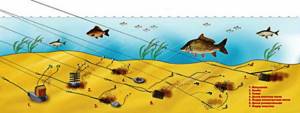
The best time to catch catfish from the shore is at night, when the fish become active and are looking for food. It is worth noting that you need to prepare your workplace in advance so that at night you have everything you need at hand.
Donkey installation
After assembling and equipping the bottom fishing rod for catching catfish, all that remains is to make a catchable installation that is in direct contact with the fish.
To assemble the catfish mount you will need:
- leash with hook or double;
- reinforced swivel;
- a piece of cord with a diameter of 0.3 mm and a length of 45 cm;
- two mounting beads;
- two sliding weights (weighing 80 grams and above);
- American type quick release swivel.
The installation of the bottom tackle is done in advance and already on the reservoir it is attached to the base using the loop-to-loop method, or using a swivel with a quick release.
In order to do the installation you need:
- tie a reinforced swivel to the end of the cord;
- pull the mounting beads onto the cord and lower them to the swivel;
- put weights on the cord;
- attach a swivel with a quick release to the end of the cord;
- tie a leash to the lower swivel.
As you can see, installation is very simple and is easy to do even for a beginner in fishing. But at the same time, the installation is catchy, both in currents and in still water, and simplicity is an advantage, not a disadvantage.
Sliding weights are used in order not to spook the fish, and at the same time, if the gear breaks, the catfish can always free itself from the weight, and then from the hook. The beads are needed to prevent weights from hitting the knot with which the swivel is tied, and two pieces are placed in order to avoid accidental damage to the knot if one bead breaks.
The length of the leash is 25–30 cm, the hook can be tied with any fishing knot. The diameter of the braid from which the leash is knitted should be 0.05 mm thinner than the diameter of the main fishing line. This is necessary so that when the tackle is hooked and forcefully pulled out, only the hook breaks, and all other elements remain in place.
Choosing gear
Tackle selection is key. Catfish is a trophy that requires respectful and attentive treatment. And preparation for fishing begins with a thorough inspection of the gear.
Here's what you need to check and put in order before fishing:
- A powerful rod 2.5 - 3 m long and resistant material - preferably made of fiberglass.
- Dense fishing line - 150 - 200 m. or more. Experienced fishermen talk about a monofilament diameter of up to 1 mm. for small catfish. For large fish, an intertwined double fishing line or nylon thread will be “relevant”. She must cope with the load.
- Leash up to 0.5 m long. At the same time, it is approximately 1.15 mm thinner than the main line.
- Durable and comfortable spinning carp reel.
- The load depends on the current and the expected catch. Its weight ranges from 50 to 120 grams.
- Hook No. 10, 20, 30 and even No. 40. You can take a double or tee.
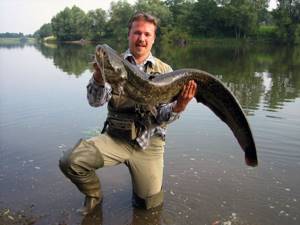
Donka with an underwater float
It is a big mistake to think that the catfish takes the bait exclusively from the bottom of the reservoir, and you only need to catch it by pressing the equipment with a heavy load. As practice shows, this fish also feeds in the bottom layer, and often a raised bait turns out to be more attractive to representatives of the catfish family.
To knit a donkey with an underwater float you will need:
- leash 1.5 meters long;
- 2 hooks;
- carabiner with quick release;
- silicone tube 15 cm long;
- sliding weight;
- underwater float;
- used firefly for feeder or float fishing;
- stopper
Installation of equipment with an underwater float on a catfish:
- a hook is tied to the leash using a knotless knot;
- a tube 10 cm long, put on a leash, stretched and pulled onto the hook;
- the second hook is threaded into the tube so that the ends of the hooks are directed in different directions;
- The second hook is tied to the leash using a knotless knot;
- the rest of the tube is put on the leash and on the second hook;
- the float is put on the leash, pulled all the way to the tube and secured with a firefly;
- a carabiner is tied on the back of the leash;
- a stopper is put on the main cord;
- then a sliding weight is put on;
- the load is secured with a second stopper;
- the base is tied to a carabiner.
This equipment is more complex and in it two hooks “look” in different directions and are located at different heights. The bait on the hooks is the same and the fish itself chooses which one is more attractive. The equipment with a float is brought in on a boat, because throwing it by hand and not getting tangled is difficult even for experienced fishermen, not to mention beginners.
The disadvantage of such equipment is that if the hook becomes dull, it is problematic to replace it; you will have to re-tie the entire equipment. Sharpening of hooks is allowed and for this purpose needle files with a fine notch or special sharpeners for hooks are used.
On a frog or crayfish
Crayfish should be used as bait when fishing in the bottom layers of water. This arthropod is a common food for catfish, especially during the molting period. You can attach either a whole crayfish or a crayfish neck to the hook.
The frog is a versatile bait that works well throughout the summer. It is preferable to use this amphibian when fishing in coastal pools and creeks. The frog is placed on a hook by the upper lip.
Catfish baits

It contains not only small fish, but also other aquatic inhabitants. Therefore, the following baits are used when fishing for catfish:
- grasshoppers;
- frogs;
- locusts;
- worms;
- mussels;
- squid;
- mole cricket;
- meat.
As you can see, the list of catchable baits is large, but on a reservoir you have to experiment in order to select a bait that works in the existing conditions.
Features of installation and fishing
You can successfully catch catfish from the shore using bottom tackle, especially at night. The main thing here is to guess the fishing spot and correctly calculate the casting distance of the bait (they must match). The bait can be delivered to the chosen place by boat, and then returned to the shore and calmly wait for a bite.
Donks without a rod are secured to the shore with powerful stakes, firmly driven into the ground, or tied to trees. If the bottom tackle is attached to a fishing rod, it is installed in a special stand, securely screwed into the soil.
When fishing from a boat, use short rods or simply hold the tackle in your hands. The rods are firmly fixed on holders to the side of the boat and the line tension is adjusted as necessary.
If you choose the method of holding the tackle in your hands without a rod, the following precautions should be observed:
- You cannot wrap the cord (line) around your hand - with a strong tug, you can fall out of the boat or even lose your hand.
- You should move carefully along the bottom of the boat and try not to get your feet entangled in loose tackle - you should always have a sharp cutting object at hand that can quickly cut the cord.
It is dangerous to drag large prey into a boat (the predator has immense strength and is quite capable of turning over a small boat).
Baits are placed on the sides of the holes and on their bottom. The bait is no different from the bait when catching catfish using another method - larvae, worms, crayfish, fish and meat are not the freshest. You should behave quietly while fishing so as not to scare away the fish with extraneous sounds.
Catfish Snack
In cases where catfish fishing is carried out at short distances, a cast without a rod is used. The advantage of this gear is its simplicity of design, but it is offset by serious disadvantages.
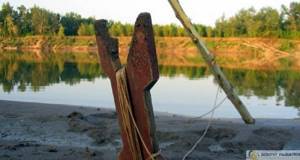
It is very difficult to hook a large trophy and bring it to the shore manually, the fishing line cuts your hands and if the catfish actively resists, it will simply break the equipment. The rod absorbs the jerks of the fish and with its help, fishing is greatly simplified. Therefore, a catfish donka without a rod is used when catching fish up to 5 kg, and if a trophy of greater weight is bitten, such tackle will be useless.
Place and time of fishing
The result of catfish fishing largely depends on knowledge of those places on the reservoir where the predator goes to feed. The most promising places for catching catfish are:
- exits from pits;
- channel edges;
- flooded snag;
- coastal pools;
- deep bays.
In stagnant bodies of water, you should look for places with sharp changes in depth. When fishing on a river, you need to pay attention to places with reverse currents, as well as deep reaches. The depth at which catfish prefer to feed may vary depending on the time of year.
| April May | 2–5 m |
| June August | 5–10 m |
| September - November | 10–16 m |
In the spring, the fisherman's prey often becomes small catfish, which quickly recover from hibernation. Large specimens begin to be caught on fishing gear 1–2 weeks after spawning, which usually occurs in late June - early July.
The period from July to October is the most favorable time for catching trophy catfish. During this period, the mustachioed predator is consistently caught using various gear. As the water gets colder, the catfish becomes less active, begins to roll into wintering pits, but still continues to respond to natural baits and artificial baits offered to it. After the water temperature drops below 8 degrees, the “mustached” one stops pecking and goes into suspended animation until the onset of spring.
Catfish are reluctant to respond to bait during the hot afternoon hours. It is much easier to catch it at dawn, when the heat subsides and peaceful fish come out of their daytime hiding places. Night fishing is considered the most effective, during which the angler has a chance to catch a truly large predator.
Techniques and tactics of bottom fishing for catfish with spinning rod
Catching catfish is most effective at night. You have to wait for hours for a bite, especially if you are hunting for large trophies, so the fisherman needs to create all the amenities and secure the gear. A large catfish is quite capable of dragging the rod into the water after biting, so the blanks are securely fixed on the shore, and the friction brake of the reel is weakened.
Somyatniks use from 3 to 10 rods mounted on racks for fishing. The alarms are mechanical or electronic, there is no big difference. Catfish bites are sharp and powerful, it is difficult to miss them and all that remains is to apply maximum effort in order to get the trophy into the landing net.
With the appearance of the first rays of the sun, you can stop fishing for catfish and return to the shore of the reservoir in the evening, when it begins to get dark. If the fishing location is chosen correctly, as well as the tackle and bait, the likelihood of catching a trophy catfish increases significantly.
Experienced somyat fishermen know well the places on the reservoirs where large individuals live, but luck will certainly come to beginners who make maximum efforts. After a bite, you can’t force the fish to fish and, using the friction brake, you need to tire the fish and calmly bring it to the landing net. A large catfish resists to the end and only if bubbles appear on the surface of the water does this mean that the fish gives up.
Fishing for catfish gives unique emotions, and rewards those who are patient with worthy trophies. Therefore, when favorable conditions arise, go to the reservoirs and try your luck in trophy fishing.
Trolling gear and fishing techniques
Trolling catfish is one of the most effective ways to catch a predator, but also the most difficult of all. It is carried out from a boat (inflatable or hull), equipped with a motor and in constant motion. Well suited for catching catfish in rivers and other open waters all year round.
Particular effectiveness can be achieved in the summer. The time of day does not affect the capture of prey - with the correct organization of the process, fishing goes well during the day, at night and in the evening. An echo sounder and navigator provide invaluable assistance to a fisherman in searching for prey at great depths and expanses. The latter device also helps determine the speed of the boat.
Tackle
- The boat must be safe, spacious, stable, well controlled and equipped with a powerful motor.
- A fishing rod is selected that is powerful, made of composite materials, with a medium action blank, a plug-in design, a cast of 100 g or more, a screw-type reel holder and reinforced rings. The optimal length is 2.4 – 2.8 m.
- The type of reel (multiplier or spinning) depends on the preferences of the fisherman and does not affect the quality of fishing. Of the general requirements, pay attention to the following points: strength, spool capacity (250 m or more), size (3000-5000), ease of rotation, quality of line laying and speed of spool replacement.
- Braided fishing line with a cross section of 0.3 -0.35 mm.
- A long leash in the form of a braided metal cable.
Lures
In most cases, bladed wobblers with different immersion horizons are used as bait. It is worth choosing wobblers designed specifically for trolling fishing - they are capable of operating at high speeds of about 3-7 km/h, are not thrown to the surface, and do not twist when moving.
Some fishermen try to experiment with large silicone baits and spinners, but they are more difficult to keep in the intended horizon of fish presence. Since catfish do not have good eyesight, the color of the bait will not play a special role.
Fishing technique
If the bottom topography and the depth of the reservoir are known, the rod is attached to a holder on the boat, a wobbler of the required parameters is installed, thrown into the water and begins to move against the current along a pre-planned course.
In situations where the reservoir is little known or the bottom has sharp changes, it is better to hold the rod in your hands in order to react in time with a sharp jerk when the wobbler catches on a snag.
The new, previously untested wobbler model also needs increased attention from the fisherman - the rod is held suspended in order to feel the sound of the wobbler with a shovel on the bottom with your hand and determine the true depth of the nozzle.
